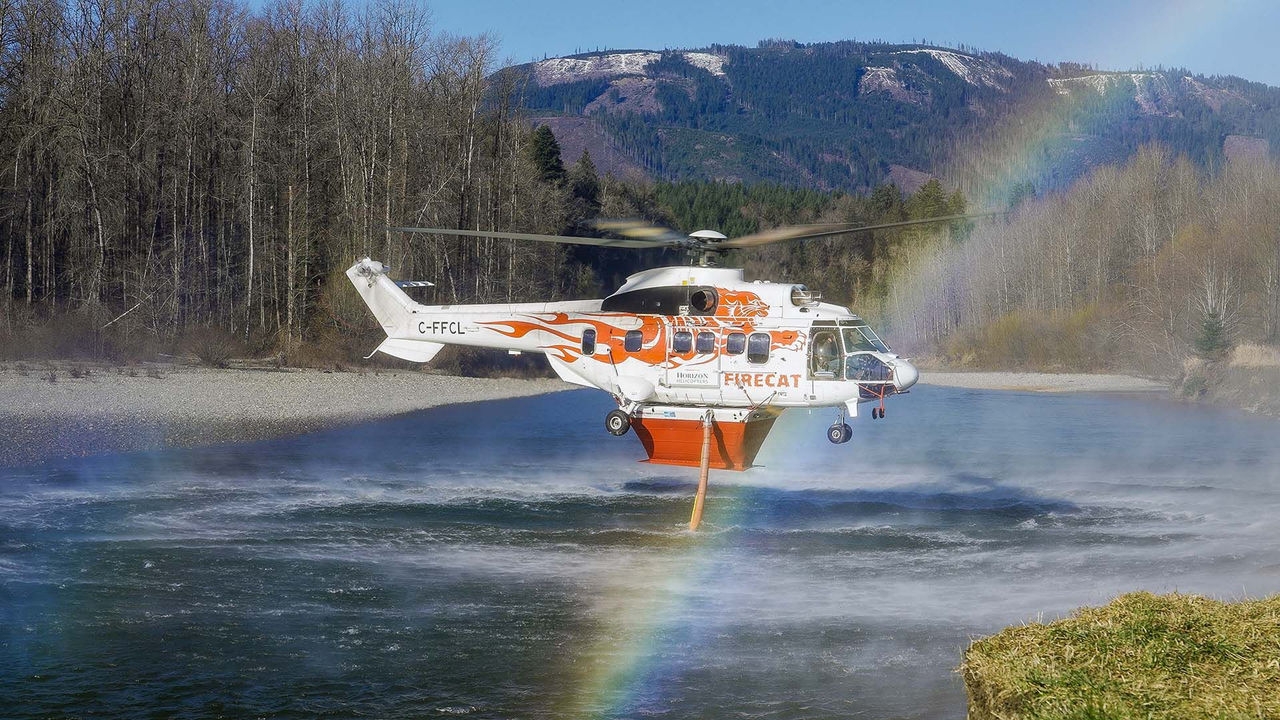Helitak Firefighting Equipment has built a stellar reputation among firefighters and fleet operators since launching in 2006.
The Brisbane-based company has now extended its physical presence to the United States. In 2024 it leased a 20,000-square-foot warehouse in Camarillo, California. The move will allow the company to service and support its growing North American market.
The investment is already proving its worth, says founder, CEO and Chief Engineer Jason Schellaars.
‘Half the fleet of water bomber helicopters fighting the recent California wildfires were carrying Helitak equipment,’ says Schellaars. ‘From our new US base, the Helitak team was able to support that fleet locally.’
Designing a better and safer solution
Schellaars is an experienced firefighting pilot. He began developing Helitak’s underbody tanks for helicopters more than 25 years ago. His aim was to address limitations with existing designs.
It has been a long process, he says. ‘We have a shipping container filled with the evolution of Helitak – all the design and engineering decisions we had to work through to get to where we are now.’
The iterations have led to Helitak’s current range of 9 externally mounted tanks, with a capacity ranging from 1,000 to 11,000 litres.
Each tank is designed to maximise the aircraft’s lift capacity and versatility on a fire ground, explains Helitak’s Business Development Manager and aircraft technician, Nick Noorman.
Carbon fibre reduces weight. The tank’s flat shape when empty minimises interference with the aircraft’s undercarriage and centre of gravity. As it is filled, it expands vertically to a distinctive pyramid shape. This ensures a consistent flow and direction of water onto a fire.
Adapting quickly to fire seasons and tasks
Tanks are quick to mount or remove, maintaining the aircraft’s multi-mission capability.
‘A Black Hawk can be out carrying firefighters and equipment in the morning,’ explains Schellaars. ‘Twenty-five minutes later we can have the tank on there and be airborne and fighting fires.’
California’s recent fires starkly illustrate another challenge facing firefighters and the need for adaptability.
‘Even 10 years ago, operators might move dedicated firefighting machines between northern and southern hemisphere summers,’ says Schellaars. ‘Now, there is no real separation between fire seasons. Operators need to maintain fleets in each location and adapt them rapidly for different tasks.’

Helitak’s tanks are designed to maximise the aircraft’s lift capacity and versatility on a fire ground.
Rapid refilling at shallow depths
One advantage of using helicopters for firefighting is they can hover and refill over nearby water sources. Helitak’s hover pump lets them fill from as little as 500mm depth.
The company has also targeted efficiency in refilling. ‘We can literally do a refill in under 3 minutes,’ says Schellaars. ‘With a nearby water source, we can put around 20 loads every hour on the fire ground.’ This provides ground crews with consistent and versatile support.
However, it can seem counterintuitive that a smaller aircraft would be more effective than a large-capacity water bomber. Helitak also provides extensive telemetry for fleet operators, providing data to show how many litres of water they’ve delivered onto a fire ground.
Austrade support helps uncover export opportunities
Helitak’s customer base is expanding with the growing use of aerial firefighting. Helitak had 20 units in Greece last fire season. There is also interest from customers in the Middle East and South America.
Committing to a purchase requires a degree of faith from customers.
‘Initially that was probably the biggest challenge,’ says Schellaars. ‘But we’re getting that recognition now and they’re confident we’ll deliver a product they can trust.
‘Austrade’s backing helped give us credibility’, adds Noorman. ‘They’ve also been a great sounding board, reassuring us about who we’re dealing with and helping us identify opportunities.’
Building a global reputation
Now nearly 40% of Helitak’s customers are repeat business and others come from word-of-mouth.
Schellaars believes that customers are reassured by the quality of the product, and by Helitak’s commitment to customer service.
‘Tanks do sometimes behave differently on a different aircraft or different operating environment’, he explains. ‘If we haven’t managed to sort out their issue with diagnostics or a video call, we’ll jump on a plane and go to them.
‘We’re not going to have one of our products keeping them on the ground when it could be out putting out fires.’
Go further, faster with Austrade
Austrade’s Go Global Toolkit helps you learn the export basics, find the right markets and understand market requirements.